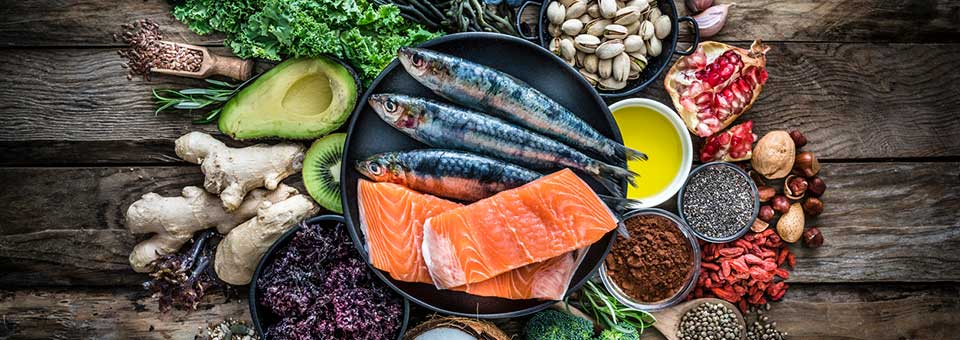You’d never swallow a spoonful of paint.
But every time you eat bottled ranch or blue cheese dressing — not to mention skim milk, mayonnaise, or breath mints — you might as well be licking a paintbrush.
Consider this: Food manufacturers add a dangerous compound called titanium dioxide to a lot of your favorite foods. They do it to whiten and brighten them. It makes them look more appealing.
But titanium dioxide is the same chemical that’s in paint, plastics, and sunscreen. NASA even coated the outside of its Saturn V rocket with it!
The FDA allows food products to contain 1% titanium dioxide (TiO2) without it having to be included on the ingredient label.1
And you’re probably ingesting up to a trillion particles a day.2
The FDA says that ingesting small amounts of TiO2 doesn’t pose a health problem.
But here’s what they didn’t take into account…
Most of the research was done on particles that were inhaled, not swallowed. And swallowing titanium dioxide makes all the difference to your health…
New research shows that TiO2 particles can damage your intestines when eaten. And about 90% of food absorption occurs in your intestines.3
That makes it much harder for your body to absorb nutrients like zinc, iron, and omega-3.
A zinc deficiency leads to a compromised immune system, gastrointestinal problems, liver and kidney disease, hair and hearing loss, skin lesions, and diarrhea. In severe cases, it can cause DNA damage that increases your cancer risk. I see patients all the time who are zinc deficient. About 40% of older Americans have low levels.4
Too little iron leads to anemia, fatigue, low oxygen levels, headaches, anxiety, and hair loss. In a worst-case scenario, you can develop heart failure.
We used to get all the iron we needed from food. But according to a recent study, 62% of
traditionally iron-rich foods contained less of the mineral in 2015 than in 1999. The same study found that the average American’s intake of iron dropped nearly 7% for men and almost 10% for women.5Iron is necessary to make hemoglobin and for hormone production.
And you’re already aware of how important it is to get enough essential fatty acids like omega-3s. Today, 99% of Americans are omega-3 deficient. A Harvard study concluded that almost 100,000 deaths a year could be prevented if people had sufficient omega-3 intake.6
Your body needs these fats to function. A deficiency results in arthritis, depression, fatigue, memory loss, heart problems, vision loss, painful joints, and poor circulation. Too little also causes dry skin, hair loss, weak fingernails, and dry eyes.
Ramp Up Your Nutrient Absorption
The biggest ingestible sources of TiO2 are processed foods. So your best bet is to avoid them and choose organic, whole foods. But sometimes that’s easier said than done…
In that case, I recommend adding foods or supplements to your diet to make up for what you might not be absorbing.
-
- Get enough zinc. Great food sources include oysters, grass-fed beef and calf liver, Alaskan King crab, lamb, dark meat chicken, and pork. We get about 10 mg of zinc a day from food. But we only absorb 2 to 3 mg. And even if we absorbed everything we ate, 10 mg isn’t enough. I suggest supplementing with 30 mg a day.
- Increase iron and its absorption. Good food sources of iron are shellfish, spinach, grass-fed liver, and red meat. I also suggest adding foods high in vitamin C – like citrus fruits, dark green leafy vegetables, tomatoes, and strawberries – to help your body absorb iron more easily. Before supplementing, have a blood test to determine your levels.
- Eat the right fats. To bump up your omega-3 levels, eat fatty fish three times a week. Grass-fed beef is another great source. Snack on walnuts or almonds. Sprinkle pumpkin or hemp seeds on a salad. But I recommend supplementing with krill and calamari oil. In one study, researchers gave krill oil, fish oil, or olive oil to 76 adults. At the end of four weeks, they tested their levels. Those taking olive oil saw their omega- 3s rise by 3%. The numbers increased in those taking fish oil. But those taking krill oil saw their omega-3s skyrocket by 179%.7 At the Sears Institute for Anti-Aging Medicine, I tell my patients to supplement with a combination of krill and calamari oil. I recommend at least 600 mg of DHA and 400 mg of EPA.
To Your Good Health,

Al Sears, MD, CNS
References:
1. CFR – Code of Federal Regulations Title 21. FDA U.S. Food & Drug Administration
2. Greger, M. “Titanium dioxide & inflammatory bowel disease.” NutritionFacts.org. Volume 12. February 18, 2013.
3. Zhongyuan Guo, Nicole J. Martucci, Fabiola Moreno-Olivas, Elad Tako, Gretchen J. Mahler. Titanium dioxide nanoparticle ingestion alters nutrient absorption in an in vitro model of the small intestine. NanoImpact, 2017; 5: 70.
4. Zinc deficiencies a global concern. News and Research Communications. Oregon State University. 09/17/2009.
5. Sun H, and Weaver C. “Decreased iron intake parallels rising iron deficiency anemia and related mortality rates in the US population.” J Nutr. 2021 Jul 1;151(7):1947-1955.
6. “Higher blood omega-3s associated with lower risk of premature death among older adults.” Harvard School of Public Health. April 1, 2013.
7. Ulven S, et al. “Comparison of bioavailability of krill oil versus fish oil and health effect.” Vasc Health Risk Manag. 2015; 11: 511–524.

